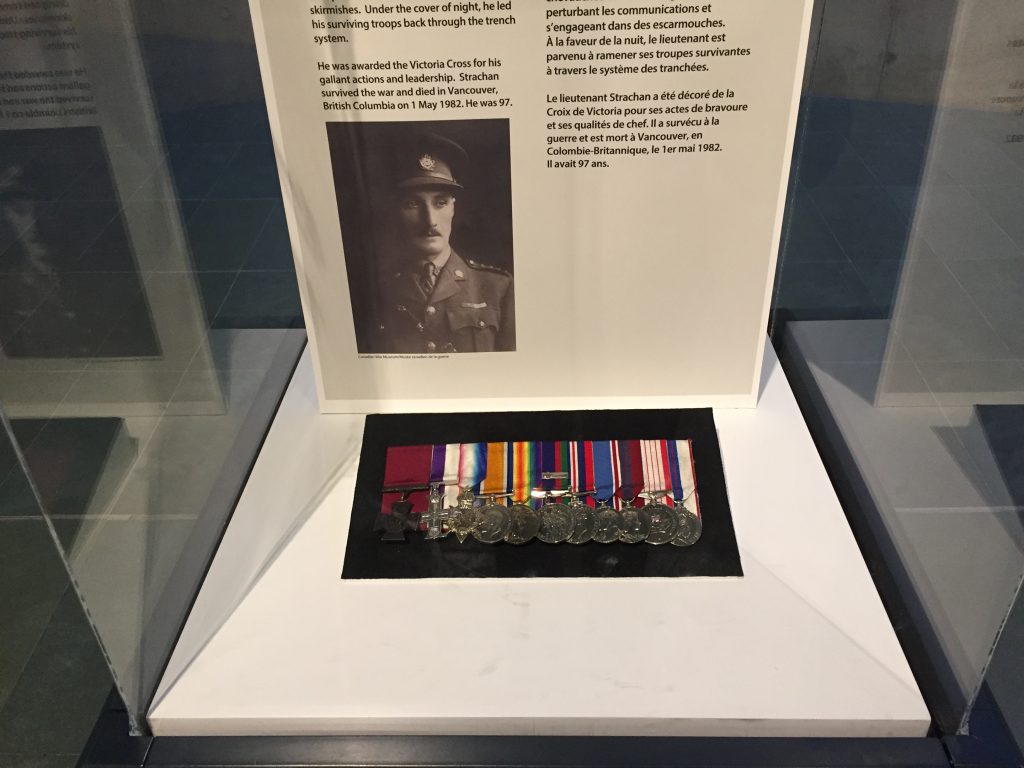War museum adds two more treasures to Victoria Cross collection
By Mike Barry
In the latest of an impressive string of acquisitions, the Canadian War Museum has acquired two more Victoria Cross medals to bring its collection of the country’s highest military bravery award — on display in museum’s main foyer — to 37.
The museum first announced in November that it had acquired a Victoria Cross medal set belonging to Lt.-Col. Harcus Strachan of The Fort Garry Horse and earned in 1917 — exactly 100 years ago — during the First World War.
Then, on Dec. 5, the museum announced it acquired yet another Victoria Cross.
That medal was awarded in 1917 to Cpl. Colin Fraser Barron of the Canadian Expeditionary Force for his actions at the Battle of Passchendaele, in Belgium. Barron was recognized for his “successful single-handed attack on a cluster of three enemy machine guns,” the museum said.
“This medal is a testament to one soldier’s courage and a symbol of the service and sacrifice of all Canadian soldiers who fought on the Western Front a century ago,” said museum president Mark O’Neill. “Its acquisition is especially meaningful this year as we commemorate the centenary of Passchendaele, Vimy Ridge and other iconic battles of the First World War.”
The museum’s mandate “is to tell Canada’s military history in its personal, national and international dimensions,” said Yasmine Mingay, the CWM’s director of public affairs. “Holding artifacts that are of such importance helps us tell the story of the individuals behind the medals that were received.”
The Strachan announcement came on Nov. 20 — a century to the day after he’d led a mounted squadron, the Fort Garry Horse, to the frontlines of the Battle of Cambrai after the previous squadron leader was killed.
“We chose to announce it then because of that particular milestone,” said Mingay. “The Victoria Cross had only come to us the day before, so the timing was quite interesting.”
Born in Scotland, Strachan immigrated to Canada in 1887 and enlisted in the Fort Garry Horse in 1915. The Fort Garry Horse is an armoured reconnaissance unit in the Canadian Army Reserve, based in Winnipeg.
During the battle, Strachan killed seven German soldiers in hand-to-hand combat using his sword and disabled major German telephone communications lines. He then led his squadron back to safety after a successful battle, bringing with them 15 German prisoners.
It was this epic show of leadership and gallantry that earned him his Victoria Cross, awarded by King George V on Jan. 6, 1918. It also earned him praise in the London Gazette, giving him status as a hero of the war.
Strachan died in 1982 in Vancouver at age 97.
“To be able to tell this story within our museum, and attach it to an important artifact that speaks to the time, and the actual legacy of the individual who carried out the action, is really quite powerful,” said Mingay.
The Victoria Cross is the highest award that can be given to members of British-associated armed forces, previously including Commonwealth countries. Most are awarded personally by the British monarch at Buckingham Palace. The Canadian War Museum holds one of the largest collections of Victoria Cross medals outside of the UK.
The Victoria Cross display has been showcased this fall in museum’s front foyer.
“We want people to be able to have a look at it if they’re physically in the vicinity and can come see it,” said Mingay.

